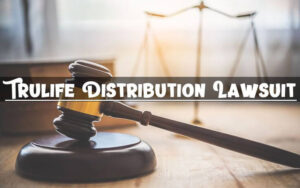Understanding the Trulife Distribution Lawsuit: A Comprehensive Overview

The Trulife Distribution lawsuit has garnered considerable attention within both business and legal circles. This legal dispute has sparked serious discussions about business practices, contractual obligations, and the impact of lawsuits on corporate reputations. In this article, we will delve into the details of this high-profile case, examining its origins, implications, and potential outcomes.
The Background of Trulife Distribution
Trulife Distribution is a prominent company in the health and wellness industry, specializing in distributing a wide range of products, including dietary supplements, vitamins, and other health-related goods. The company’s success has largely been built on its ability to form strong partnerships with manufacturers and retailers, ensuring that consumers have access to high-quality products.
Despite its success, Trulife Distribution has faced challenges over the years, including fierce competition and legal disputes. Among these challenges, the Trulife Distribution lawsuit stands out as a pivotal event that could have far-reaching consequences for the company’s operations and reputation.
What is the Trulife Distribution Lawsuit?
The Trulife Distribution lawsuit refers to a legal battle involving the company and its stakeholders. The dispute centers on allegations of contractual breaches, deceptive business practices, and potentially fraudulent activities. While the specifics of the case vary depending on the claims filed, several key issues have emerged as central to the lawsuit:
- Contractual Disputes: The lawsuit includes claims that Trulife Distribution failed to honor its contractual obligations with one or more of its partners. This includes allegations of delayed payments, unfulfilled product deliveries, and other breaches of agreed terms.
- Deceptive Practices: Accusations of misleading advertising and false claims about product efficacy have also been levied. These allegations have not only attracted legal scrutiny but have also raised concerns among consumers and regulatory bodies.
- Fraud Allegations: Some parties involved in the lawsuit have alleged that Trulife Distribution engaged in fraudulent activities to secure business deals or gain an unfair advantage in the market.
Key Players Involved
The Trulife Distribution lawsuit involves multiple stakeholders, including:

- Former Business Partners: Former collaborators who claim they were wronged by the company’s practices.
- Regulatory Authorities: Government agencies that are investigating whether Trulife Distribution’s practices violate industry regulations.
- Consumers: Individuals who may have been misled by the company’s advertising or experienced issues with its products.
- Legal Teams: Both the plaintiff’s and defendant’s legal representatives are playing critical roles in shaping the outcome of this case.
Legal Proceedings and Timeline
The timeline of the Trulife Distribution lawsuit is complex, involving multiple filings and court dates. Below is a general overview of the legal proceedings:
- Initial Filing: The lawsuit was initially filed by a group of plaintiffs alleging breach of contract and deceptive practices. This marked the beginning of a lengthy legal process.
- Preliminary Hearings: Early hearings focused on the admissibility of evidence and the scope of the claims.
- Discovery Phase: Both parties engaged in the discovery process, gathering documents, emails, and other evidence to support their arguments.
- Mediation Attempts: In some instances, parties involved in lawsuits like this attempt to resolve disputes through mediation to avoid prolonged litigation. It remains unclear whether such attempts were made in this case.
- Court Trial: The case has now progressed to a trial phase, with both sides presenting their arguments and evidence before a judge or jury.
Implications of the Trulife Distribution Lawsuit
The Trulife Distribution lawsuit has significant implications for all parties involved. Let’s explore these potential impacts in greater detail:
- For Trulife Distribution:
- Reputation Damage: Lawsuits often tarnish a company’s reputation, making it challenging to retain consumer trust and attract new partners.
- Financial Losses: Legal battles are costly, both in terms of legal fees and potential settlements or judgments against the company.
- Operational Disruptions: The lawsuit may divert resources and attention away from core business activities, hindering growth.
- For Plaintiffs:
- Compensation: If successful, the plaintiffs could receive monetary compensation for their claims.
- Vindication: A favorable outcome could provide validation for their grievances and potentially set a precedent for other similar cases.
- For the Industry:
- Regulatory Changes: High-profile lawsuits often lead to increased scrutiny and regulatory changes to prevent similar disputes in the future.
- Market Dynamics: Competitors may capitalize on Trulife Distribution’s legal troubles to gain a competitive edge.

Public and Media Reaction
The Trulife Distribution lawsuit has attracted significant media attention, with news outlets and industry commentators closely following the case. Public reaction has been mixed, with some expressing sympathy for the plaintiffs and others reserving judgment until more facts emerge. Social media platforms have also become a battleground for opinions, with discussions about the broader implications of the lawsuit dominating online forums.
Lessons Learned
The Trulife Distribution lawsuit serves as a cautionary tale for businesses in any industry. Key takeaways include:
- The Importance of Transparency: Companies must prioritize transparency in their dealings to build trust with partners and consumers.
- Adherence to Contracts: Honoring contractual obligations is essential for maintaining healthy business relationships and avoiding legal disputes.
- Ethical Practices: Ethical conduct in advertising, product claims, and operations is crucial to avoid regulatory scrutiny and public backlash.

What Lies Ahead?
As the Trulife Distribution lawsuit continues to unfold, several potential outcomes could shape the future of the company and the broader industry:
- Settlement: The parties involved may reach a settlement agreement to resolve the dispute without further litigation.
- Judgment: A court ruling in favor of either side could have significant financial and reputational repercussions.
- Regulatory Action: Depending on the findings, regulatory authorities may impose fines, sanctions, or other penalties on Trulife Distribution.
Conclusion
The Trulife Distribution lawsuit underscores the complexities of modern business operations and the legal risks companies face in a competitive marketplace. While the case continues to develop, it highlights the importance of ethical practices, transparency, and accountability in building and sustaining a successful business. As stakeholders await the final resolution, this lawsuit serves as a reminder of the potential consequences of legal disputes in the corporate world.



